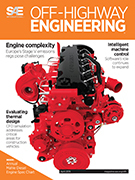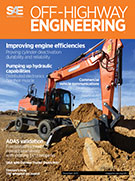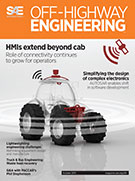Magazine

MOBILITY ENGINEERING
2016-12-01
Focus on advanced safety systems and human-factor interventions The impact of REACH on the aviation sector Considered the most comprehensive chemical-regulation legislation to date, REACH presents serious ramifications for the aircraft industry. Lightweighting: What's Next? Experts weigh in on the challenges and future enablers in the battle to reduce vehicle mass. The best of COMVEC 2016 Autonomous vehicles and improved fuel efficiency via advanced powertrain solutions are pressing topics detailed in this select group of technical papers from the SAE Commercial Vehicle Engineering Congress. Optimizing waste heat recovery for long-haul trucks Autonomous solutions in agriculture Downsizing a HD diesel engine for off-highway applications Zero-emissions electric aircraft: Theory vs. reality











